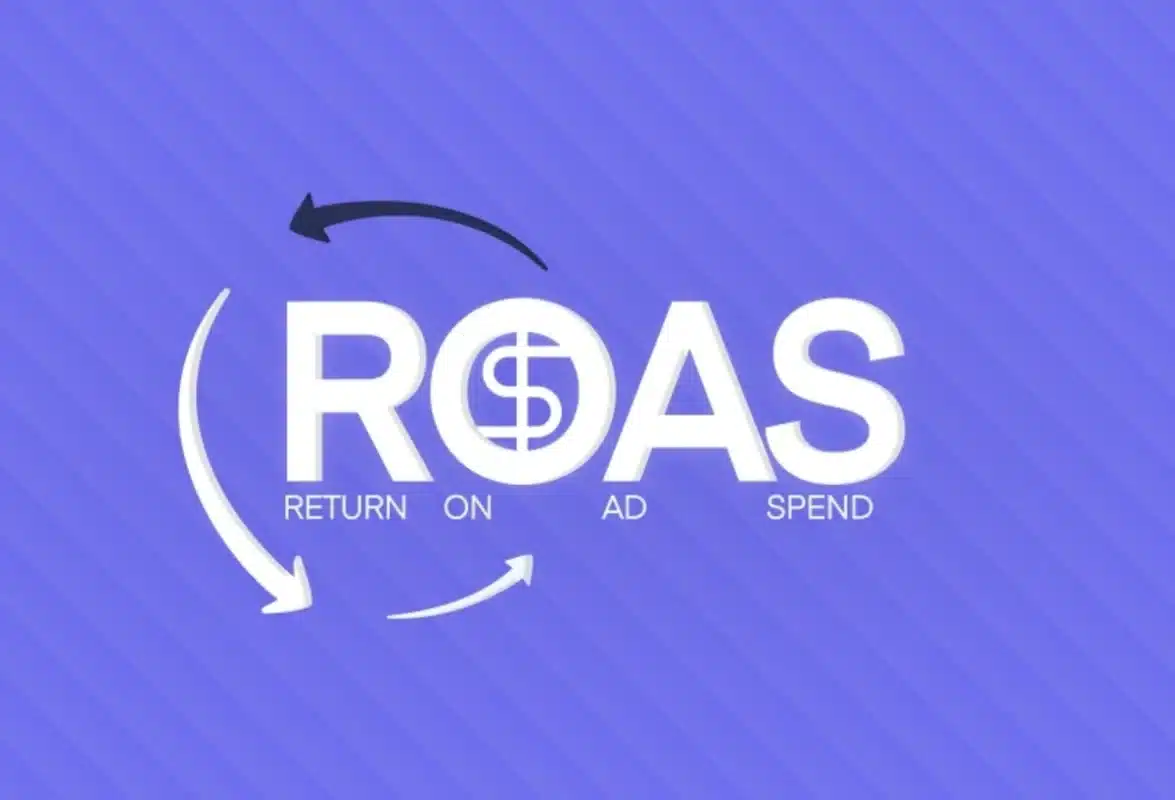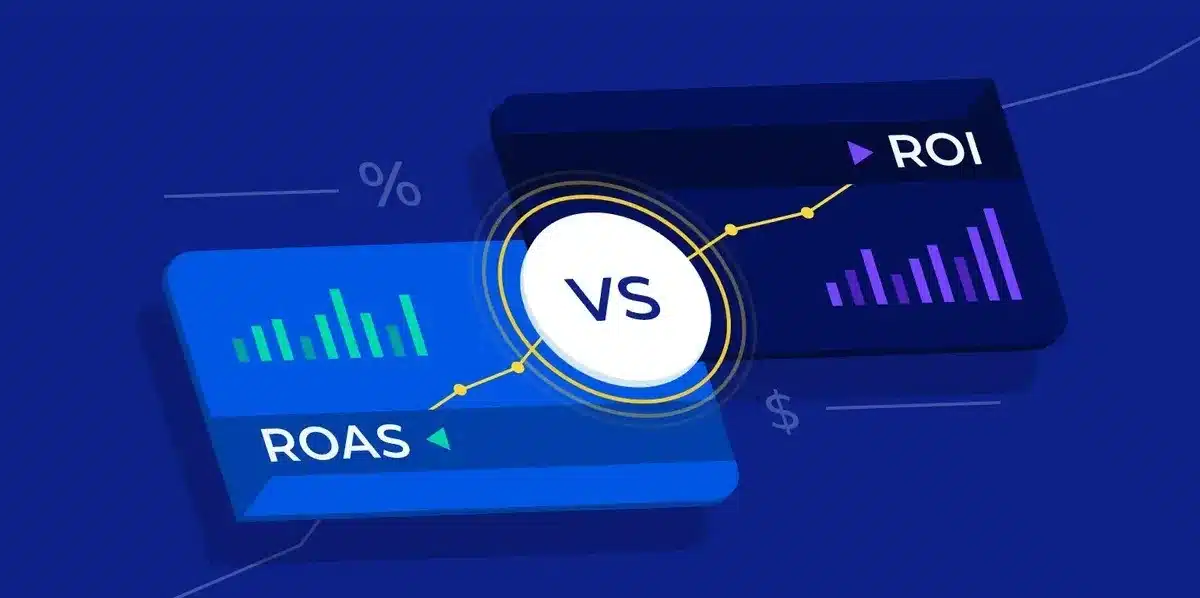- What Exactly is ROAS?
- What is a Good ROAS for Ecommerce?
- How Is ROAS Calculated?
- How to Improve ROAS for an Ecommerce Store
- What Is The Difference Between ROAS and ROI?
- Conclusion
- FAQs
- What is it that hinders a company to accomplish a high ROAS?
- For what reason is ROAS vital for Ecommerce companies?
- Which tools enable eCommerce businesses to calculate and monitor ROAS?
- How often do you need to track ROAS for your eCommerce campaigns?
- What maximum benefit can a seller reap from high ROAS in eCommerce?
What is a Good ROAS for Ecommerce?

In the eCommerce world, each dollar spent on advertising must work.
But what is a good ROAS for eCommerce? Does it have any standard baseline, or does it vary with industries and company models?
In this blog, we’re going to dig deeply into ROAS, its importance in eCommerce, elements determining what makes up a successful ROAS, and how to optimize ROAS in your online store.
Whether you are a seasoned eCommerce specialist or just opening your online venture, knowing the good ROAS for eCommerce helps you make the right decisions that would pay off and result in profitability.
What Exactly is ROAS?

ROAS is a good measure of digital marketing and reveals the efficiency of an advertisement campaign.
ROAS is calculated through revenues generated for every dollar spent on advertising. ROAS can be calculated as total ad revenue divided by the total ad spend.
In simpler words, ROAS measures the effectiveness of the returns your investment in advertising brings.
The higher the ROAS, the more profitable a campaign is because ads are making more money than they are spending.
A low ROAS means your advertising isn’t working, and it is time to change the strategy.
Knowing what good ROAS for eCommerce is very important for any online business in optimizing marketing budgets and maximizing profitability.
ROAS will be a key factor to monitor and analyze regularly by these companies to help them make better decisions on how to place the advertising dollars in order to maximize the efficiency of their marketing efforts.
What is a Good ROAS for Ecommerce?

Good ROAS for eCommerce depends on a lot of factors, which may include industry, business model, and even the goals of an advertising campaign.
However, generally speaking, a good ROAS for eCommerce businesses lies in the range of 1.1-3 or more, depending on the industry and competitive environment.
This means the company should receive between 1.1 dollars and 3 dollars in sales revenue for each dollar spent on advertising rather than profit.
How Is ROAS Calculated?
A straightforward yet powerful measure of effectiveness, Return on Ad Spend, helps eCommerce platforms know how effective their advertising campaigns have been.
Understanding what a good ROAS is for eCommerce would help you first learn how to calculate it.
ROAS Formula:
ROAS = Total Revenue Generated from Ads / Total Amount Spent on Ads
Here’s step by step on how to compute it:
- Calculate Total ad revenue: In most cases, you should be able to find this number through your eCommerce platform’s analytics or in the reporting tools for your advertising platform.
- Calculate the total amount spent on ads: For that, you are required to calculate the total amount which you have spent on all your advertising campaigns. It may include some costs associated with your ads. That could be a CPC or CPM charge.
- Take your ROAS from the ROAS formula: Here is the number of revenue divided by total money spent on adverts with total earnings by adverts.
For Example:
If your eCommerce store generated $10,000 in revenue from a $2,000 ad spend, your ROAS would be:
ROAS = $10,000 / $2,000 = 5
This means that for every dollar spent on advertising, you earned $5 in revenue.
Knowing and calculating ROAS is a very important step in knowing what a good ROAS is for eCommerce, which enables businesses to optimize their marketing strategies and enhance return on investment.
How to Improve ROAS for an Ecommerce Store
Improving Return on Ad Spend (ROAS) for your eCommerce store involves good strategic planning, optimization, and continual refinement of your advertising efforts.
Here are effective strategies to boost your ROAS:
- Target segmentation: This segment especially identifies potential customers who would convert as payers. It can be defined by analytics or customer insight through refining who they are.
- Creative and copy adjustment: The ad needs to hit creatively on the psyche of the target group. Run lots of variations by ad copy, pictures, and calls for action, among others, that will best achieve the desired activity.
- Utilize Retargeting Campaigns: Target visitors who have shown an interest in your products but did not convert using retargeting ads. Use on-site messages to urge converting visitors.
- Implement Conversion Rate Optimization (CRO) Tactics: Improve UX of the website and ease out the process of checkout. Lower abandonment rates and higher conversion rates with a decent ROAS are achieved with an optimized customer experience journey.
- Monitor and adjust the bid strategy: Follow the ad campaign, keep a tab on the performance metrics results, and adjust the bid strategies on due dates. Budget towards campaigns and keywords with max ROI.
- Operate data-driven knowledge: Optimize by campaigns due to performance metrics like click-through rates, conversion rates, and CPA, which can bring ROASes up over time.
- A/B Testing: Test any and every element in your campaigns. This could range from ad format, landing pages, or target audiences. And then optimize it toward a higher ROAS using such insights.
- LTV: Think of the long-term value of your customers while trying to measure your ROAS. Invest in campaigns that bring back those loyal customers who are probably going to repeat the purchase several times and grow the profitability of the business with time.
- Trend: Know what the trend is in digital marketing platforms. Flexibility in implementing new strategies is essential with changes in features and technology for the improvement of better campaign performance.
- Professional Help: It is best availed with professional advice from the hands of a great eCommerce digital marketer or agency since they are experts in such services. This is the aspect of expertise in which a good insight will help optimize the ROAS perfectly.
Implementing these strategies and continually optimizing your advertising will allow you to enhance ROAS for your eCommerce store, generate more revenue, and maintain growth in the online marketplace.
Additionally, using cost estimating software can improve budget management, ensuring efficient use of resources and alignment with business goals.
What Is The Difference Between ROAS and ROI?

Understanding the difference between ROAS, or Return on Ad Spend, and ROI, or Return on Investment, is the key to knowing what’s good when analyzing your marketing initiatives’ efficiency and business investment overall.
These two parameters assess business performance, but both work with different elements and pursue different goals.
Understanding such delineations is fundamental in answering the question of what constitutes good ROAS in eCommerce.
1. ROAS (Return on Ad Spend)
ROAS is the precise way to determine how much revenue an ad campaign brings against the amount spent on that campaign.
This will give a precise analysis of the success of ad campaigns, which in itself is crucial in finding what constitutes a good ROAS for eCommerce.
Purpose
- To assess the performance of particular advertising campaigns.
- To find an immediate return on revenues generated for each dollar spent on ads.
- Optimize ad spend by identifying how productive each of the campaigns is.
2. ROI (Return on Investment)
However, ROI calculates the total profitability of an investment as it calculates all associated costs and revenues pertaining to it. Thus, it gives a more comprehensive analysis of the financial return of all kinds of investments, not just advertising.
Objective
- To test the profitability of an investment or a project.
- To compare the efficiency of various investments.
- To make resource allocation decisions.
Conclusion
This can include various industry-standard measures, overall business objectives, and specific profit margins so as to zero in on how much a good ROAS actually is for eCommerce.
Typically, such a metric depends from business to business, but having a ROAS above your breakeven point will surely qualify for the result as successful. Here in this blog, we discuss the different factors associated with return on ad spending in determining how successful any eCommerce advert may have been.
It offers great information about what makes money and perhaps what should change.
The evaluation of ROAS for enhancing the effectiveness of marketing, increasing revenue, and achieving sustainable growth by eCommerce business ventures.
FAQs
What is it that hinders a company to accomplish a high ROAS?
In terms of fierce competition, shifts in market conditions, targeting, poor ad quality and the lack of good conversion tracking of some ads, these are some of the challenges.
For what reason is ROAS vital for Ecommerce companies?
For the eCommerce industry, ROAS determines the efficacy of the advertising cost – this is a key performance indicator that measures the ad revenue generated per dollar spent on its advertising. That guarantees adequate budget expenditure and improvement of the campaigns.
Which tools enable eCommerce businesses to calculate and monitor ROAS?
There are many such tools that help e-commerce businesses understand ROAS and the various ad campaigns they run, including Google Analytics, Facebook Ads Manager and eCommerce analytical tools.
How often do you need to track ROAS for your eCommerce campaigns?
There are time gaps within which the ROAS of a particular campaign should be evaluated, usually within a week or a month depending on the size and volume of ad campaigns so that changes can be made in a timely way.
What maximum benefit can a seller reap from high ROAS in eCommerce?
Higher ROAS would mean that it is much more profitable, there is a good return on marketing spends, cash flow is positive and the ad spends can be adequately increased.

Kartika Musle
A Tech enthusiast and skilled wordsmith. Explore the digital world with insightful content and unlock the latest in tech through my vision.


Leave a Reply